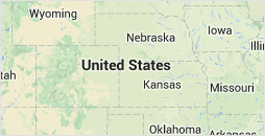Emily Clarke
PHONE NUMBER : -----
Map

What to Include In Your HR Workforce Reports
HR reporting is the process of keeping track of key data and information about your workforce. This process helps HR teams stay organized and manage daily work tasks like payroll, employee benefits, and other HR transactions.
HR workforce reports are a key part of this process and enable HR teams to know their company better and therefore, improve their business functions. If you're not quite sure what should be included in your HR workforce reports, here's a detailed explanation.
What to include in HR workforce reports
There are four main types of HR reports you should track. Below is a list of each one, as well as the metrics and information they should contain for best results.
Performance management report
This type of report provides deeper insight on how well your employees are performing and the areas in which they may need further training or assistance. It should include the following data:
- Productivity metrics for each employee, department, teams, locations, etc.
- Survey results on employee engagement and satisfaction
- Percentage of time or number of days employees were absent from work
- Total amount of money spend on new hires, training, existing employees, and travel
Recruiting report
This type of report helps companies keep track of their recruiting process and evaluate its success. It should include the following metrics:
- Number of open positions and new hires
- Various roles within departments and geographical areas
- The average time it takes for your company to fill vacancies
- Total cost of recruitment efforts
- Recruitment conversion rate (how many job applicants are turned into hired employees)
Administrative report
This type of report gives you a bird's eye look at the entire company and the people it consists of. It should include:
- The number of active employees currently on payroll
- A measure of the hours worked by a single full-time employee (known as the full-time equivalent or FTE)
- Overall male-to-female ratio
- Employees' qualifications and education level for their current positions
- Overall turnover rate of employees
Compensation report
The compensation report helps companies understand how much money they're spending on their employees. It should include metrics like:
- Total employee pay
- Cost of unscheduled absenteeism
- Cost of labor (includes employee wages, benefits, and payroll taxes)
Gathering all the data to compile HR reports can be time-consuming, so many companies use an HR dashboard to simplify the process. A third-party HR reporting service can make the process of gathering, compiling, and organizing data efficient and easy.
Author Resource:-
Emily Clarke writes about employee management, benefits and payroll service. You can find her thoughts at employee benefits blog.
